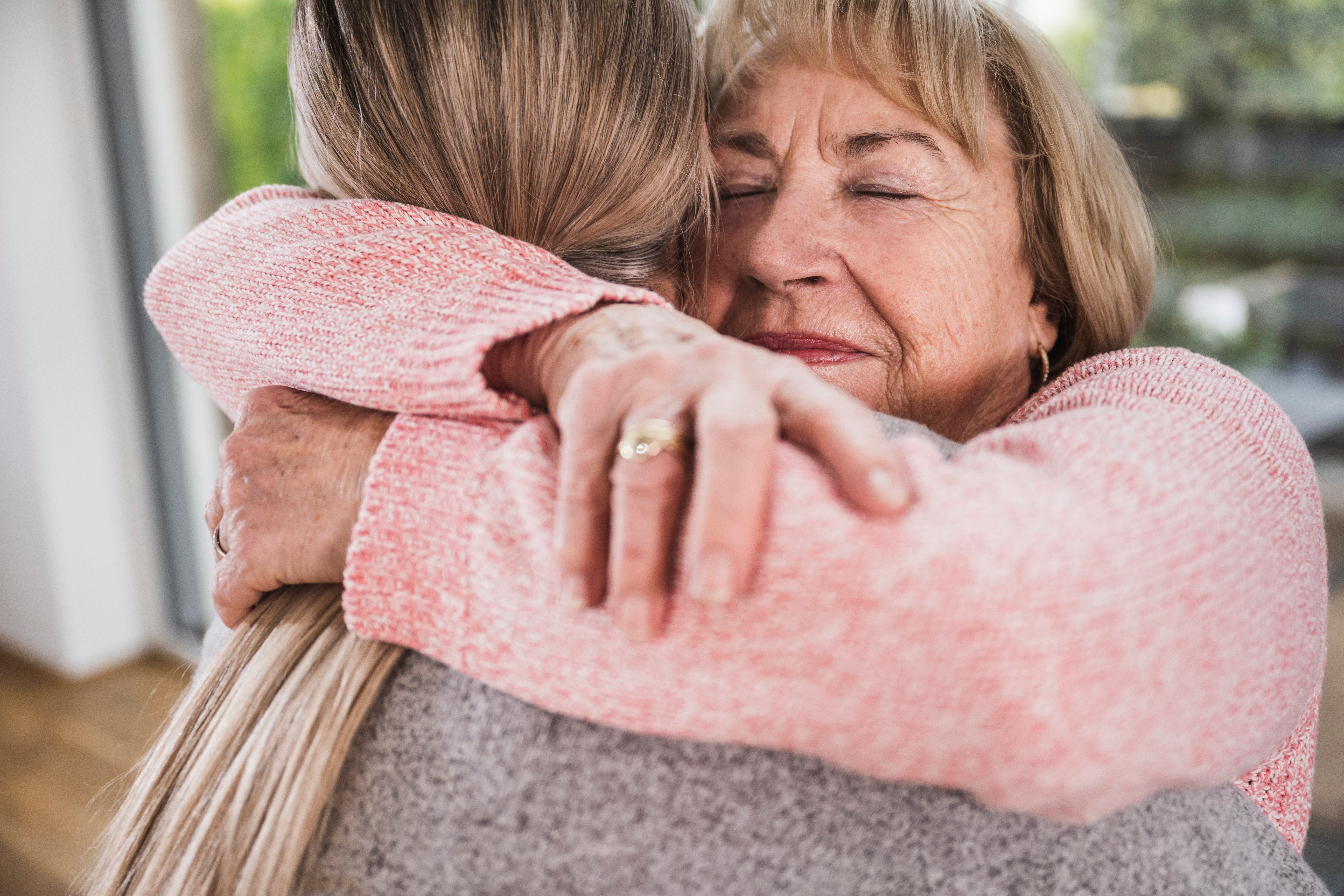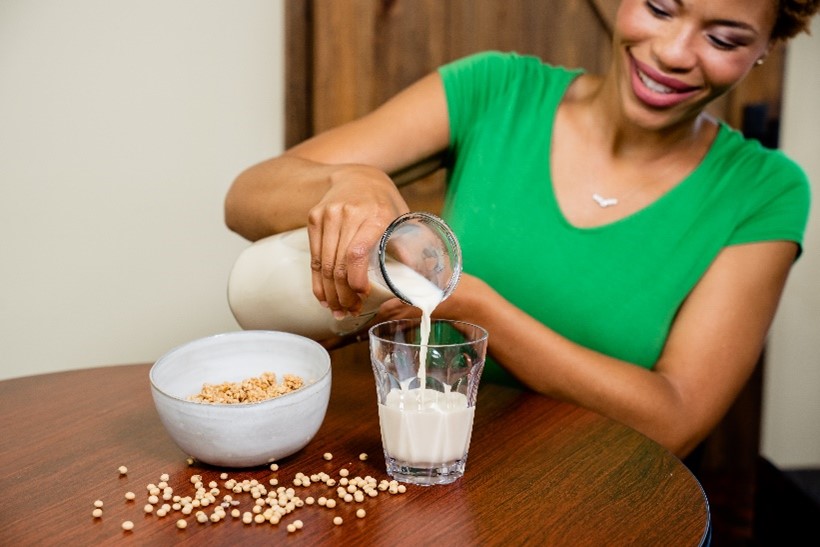FAQs: Soy and Breast Cancer

Breast cancer is one of the most common cancers in women in the United States[1], affecting 1 in 8 women[2]. And while there isn’t a definitive cause, there are factors that may impact the risk of developing this cancer, from genetics to lifestyle.
Misconceptions about the role of soy in breast cancer can be traced back to a series of animal studies published in the 1990s. Since then, scientists have discovered that rodent studies are not an accurate method for studying soy consumption due to mice having different metabolism processes than humans.[3]
In fact, since then, researchers have investigated the protective effects of soy foods against breast cancer via human clinical trials. This is in large part due to historically low breast cancer mortality rates in soy food-consuming Asian countries,[4] and the potential for soybean isoflavones to function as anti-estrogens,[5] which are compounds that may block the effect of estrogen in breast cancer cells and slow growth.[6]
Yet, people still have questions about soy and its relationship to breast cancer. Below, find science-backed responses to five frequently asked patient questions, so you can learn more about the relationship between soy and breast cancer and be equipped to address their questions.
1. If soy is safe to consume, then why are there concerns about soy and breast cancer?
Unless you have a soy allergy, soy is safe to consume. Soy foods contain isoflavones which are a type of phytoestrogen, a naturally occurring compound in many plants that shares some similarities with estrogen.[7] While there are structural similarities, isoflavones are not the same as human estrogen. Isoflavones bind to estrogen receptors in cells in a manner that differs from the way estrogen does.[8] Controversy around soy and breast cancer is based almost exclusively on rodent studies that were published in the late 1990s suggesting that isoflavones may stimulate the growth of existing estrogen-sensitive mammary tumors in mice.[9] While there are limitations to all animal studies, when it comes to animal studies and soy-related breast cancer research, rodents appear to be of limited value for concrete evidence as they metabolize isoflavones differently than humans.
Human research indicates that isoflavones, such as those found in soy foods, may be protective against breast cancer.[10],[11]
2. Does consuming soy increase the risk of breast cancer?
Evidence does not indicate a relationship between soy intake and an increased risk of breast cancer. Meta-analyses of observational studies in soy food-consuming countries suggest soy intake reduces the risk of developing breast cancer.[12] However, there is intriguing evidence indicating that soy consumption must occur during childhood and/or adolescence to derive this benefit. In addition, the impact of soy intake on several established markers of breast cancer risk, including mammographic density and in vivo breast cell proliferation has been studied extensively.[13],[14] This research shows that isoflavone intake does not adversely affect breast tissue - a conclusion that was also reached by the European Food Safety Authority in 2015 after a multi-year comprehensive evaluation of the literature.[15] In 2018, the Permanent Senate Commission on Food Safety of the German Research Foundation (SKLM) concluded that “available human studies do not indicate that an isoflavone exposure as reported in the thoroughly studied Asian population or as investigated in clinical studies (i.e., about 100 mg/day) negatively influences breast cancer risk or the thyroid hormone system in healthy women.”[16]

3. If I have or have had breast cancer, can I still eat soy?
The American Institute for Cancer Research (AICR), American Cancer Society and Canadian Cancer Society have concluded that soy is safe for women with breast cancer.
4. Are minimally processed soy foods like whole soybeans, tofu, and edamame better for you than other foods with soy ingredients?
Soy is available in a variety of forms including edamame, tofu, and whole soybeans, as well as concentrated sources of protein which are often found in more processed foods thanks to their functionality and nutritional benefits.[17][18] Processed foods like soy milk, soy-based meat alternatives, and soy protein bars are accessible, convenient, and often cost-effective choices for many people and can support an overall healthy eating pattern. Dependent on the form, soy foods offer protein, unsaturated fat, fiber, and probiotics which are valuable for a healthy diet.[19]
The majority of intervention studies researching soy and/or soy isoflavone intake and breast cancer used isolated soy protein, isoflavone supplements or other concentrated sources of soy or isoflavones.

5. Is there a guideline to how much soy can I consume per day?
According to the American Institute for Cancer Research, moderate consumption of soy is about 1 to 2 servings daily of whole soy foods, like tofu, edamame, soy milk and more. One serving of soy foods averages to about 7 grams of protein and 25 milligrams (mg) of isoflavones. Research shows that up to 3 servings a day of soy (up to 100 mg of isoflavones a day) consumed in Asian populations long-term is not linked to increased breast cancer risk.[20]
As always, it is best to consult a physician or registered dietitian regarding dietary changes.
Click here to dive deeper into the research on soy and breast cancer.
References
[1] American Cancer Society. Key Statistics for Breast Cancer. https://www.cancer.org/cancer/types/breast-cancer/about/how-common-is-breast-cancer.html
[2] National Breast Cancer Foundation. Breast Cancer Facts & Stats. https://www.nationalbreastcancer.org/breast-cancer-facts/
[3] Setchell KD, Brown NM, Zhao X, Lindley SL, Heubi JE, King EC, Messina MJ. Soy isoflavone phase II metabolism differs between rodents and humans: implications for the effect on breast cancer risk. Am J Clin Nutr. 2011 Nov;94(5):1284-94. doi: 10.3945/ajcn.111.019638. Epub 2011 Sep 28. PMID: 21955647; PMCID: PMC3192476.
[4] Pisani P, Parkin DM, Bray F, Ferlay J. Estimates of the worldwide mortality from 25 cancers in 1990. Int J Cancer. 1999 Sep 24;83(1):18-29. doi: 10.1002/(sici)1097-0215(19990924)83:1<18::aid-ijc5>3.0.co;2-m. Erratum in: Int J Cancer 1999 Dec 10;83(6):870-3. PMID: 10449602.
[5] Folman Y, Pope GS. The interaction in the immature mouse of potent oestrogens with coumestrol, genistein and other utero-vaginotrophic compounds of low potency. J Endocrinol. 1966 Feb;34(2):215-25. doi: 10.1677/joe.0.0340215. PMID: 5901836.
[6] Harvard T.H. Chan School of Public Health. Straight Talk About Soy.
[7] Desmawati D, Sulastri D. Phytoestrogens and Their Health Effect. Open Access Maced J Med Sci. 2019 Feb 14;7(3):495-499. doi: 10.3889/oamjms.2019.044. PMID: 30834024; PMCID: PMC6390141
[8] Kim IS. Current Perspectives on the Beneficial Effects of Soybean Isoflavones and Their Metabolites for Humans. Antioxidants (Basel). 2021 Jun 30;10(7):1064. doi: 10.3390/antiox10071064. PMID: 34209224; PMCID: PMC8301030.
[9] Hsieh CY, Santell RC, Haslam SZ, Helferich WG. Estrogenic effects of genistein on the growth of estrogen receptor-positive human breast cancer (MCF-7) cells in vitro and in vivo. Cancer Res. 1998 Sep 1;58(17):3833-8. Erratum in: Cancer Res 1999 Mar 15;59(6):1388. PMID: 9731492.
[10] Okekunle AP, Gao J, Wu X, Feng R, Sun C. Higher dietary soy intake appears inversely related to breast cancer risk independent of estrogen receptor breast cancer phenotypes. Heliyon 2020;6:e04228.
[11] Fan Y, Wang M, Li Z, Jiang H, Shi J, Shi X, Liu S, Zhao J, Kong L, Zhang W, et al. Intake of soy, soy isoflavones and soy protein and risk of cancer incidence and mortality. Frontiers in nutrition 2022;9:847421.
[12] Wu AH, Yu MC, Tseng CC, et al. Epidemiology of soy exposures and breast cancer risk. Br J Cancer. 2008;98(1):9-14
[13] Lamartiniere CA, Zhao YX, Fritz WA. Genistein: mammary cancer chemoprevention, in vivo mechanisms of action, potential for toxicity and bioavailability in rats. J Women’s Cancer. 2000;211-9.
[14] Shu XO, Jin F, Dai Q, et al. Soyfood intake during adolescence and subsequent risk of breast cancer among Chinese women. Cancer Epidemiol Biomarkers Prev. 2001;10(5):483-8.
[15] EFSA. EFSA ANS Panel (EFSA Panel on Food Additives and Nutrient Sources added to Food), 2015. Scientific opinion on the risk assessment for peri- and post-menopausal women taking food supplements containing isolated isoflavones. EFSA J. 13,4246 (342 pp). 2015.
[16] Huser S, Guth S, Joost HG, Soukup ST, Kohrle J, Kreienbrock L, Diel P, Lachenmeier DW, Eisenbrand G, Vollmer G, et al. Effects of isoflavones on breast tissue and the thyroid hormone system in humans: a comprehensive safety evaluation. Arch Toxicol 2018;92:2703-48.
[17] U.S. Food and Drug Administration. “Soybean Oil and Reduced Risk of Coronary Heart Disease.” https://www.fda.gov/media/106649/download. July 31, 2017.
[18] Hughes GJ, Ryan DJ, Mukherjea R, Schasteen CS. “Protein Digestibility-Corrected Amino Acid Scores (PDCAAS) for Soy Protein Isolates and Concentrate: Criteria for Evaluation.” Journal of Agriculture and Food Chemistry. 2011 December 14;59(23):12707-12. https://www.ncbi.nlm.nih.gov/pubmed/22017752
[19] Food Data Central https://fdc.nal.usda.gov/
[20] American Institute for Cancer Research. Soy Intake Does Not Increase Risk for Breast Cancer Survivors https://www.aicr.org/cancer-prevention/food-facts/soy/#:~:text=What%20Is%20a%20moderate%20amount,cup%20(about%203%20oz.)